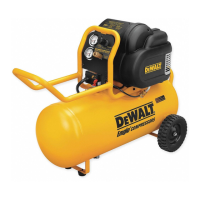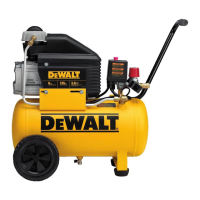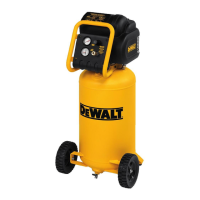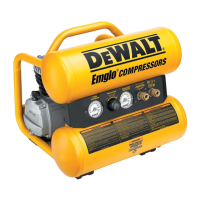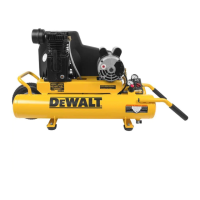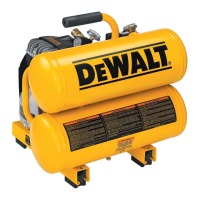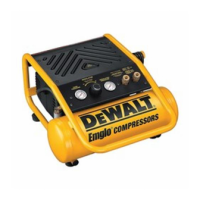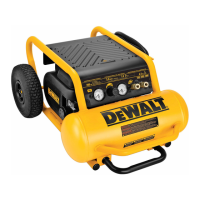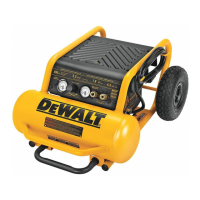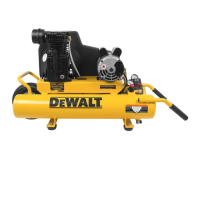SAFETYVALVE
Ifthepressureswitchdoesnotshutofftheair
compressoratitscut-outpressuresetting,the
_,CAUTION: RISK FROM NOISE safety valve (G) will protect against high
WHAT CAN HAPPEN HOWTO PREVENT iT pressure by popping out at its factory set
. Under S0me €0ndiflons and o A!wayswearCertifiedsafe_ pressure (slightly higher than the pressure
duration of use, noise from equ!pment: ANSI $!2.6 switch cut-out setting).
this product may contribute ($3,19)hearing protection, CHECK VALVE
to hearing loss. When the air compressor is operating, the check valve (F) is
SAVE THESE INSTRUCTIONS
FOR FUTURE USE
FEATURES
AUTO/OFF SWITCH
Place this switch (A) in the AUTO (I)
position to provide automatic power to the
pressure switch and OFF (O) to remove
power at the end of each use.
PRESSURE SWITCH
The pressure switch (I) automatically F
starts the motor when the air tank
pressure drops below the factory set cut-in pressure. It stops the
motor when the air tank pressure reaches the factory set cut-out
pressure.
open, allowing compressed air to enter the air tank. When the
air compressor reaches cut-out pressure, the check valve closes,
allowing air pressure to remain inside the air tank.
TANK PRESSURE GAUGE
The tank pressure gauge (B) indicates
the reserve air pressure in the tank. B
REGULATED PRESSURE GAUGE C
The outlet pressure gauge (C) indicates
the air pressure available at the outlet
side of the regulator. This pressure is
controlled by the regulator.
REGULATOR
The regulator (D) controls the air pressure shown on the regulated
pressure gauge. Pull the knob out and turn clockwise to increase
pressure and counterclockwise to decrease pressure. When the
desired pressure is reached push knob in to lock in place. The
regulated pressure range is 7-150 psi.
&WARNING: Risk of Bursting. Too much air pressure causes a
hazardous risk of bursting. Check the manufacturer's maximum
pressure rating for air tools and accessories. The regulator outlet
pressure must never exceed the maximum pressure rating.
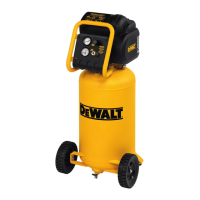
